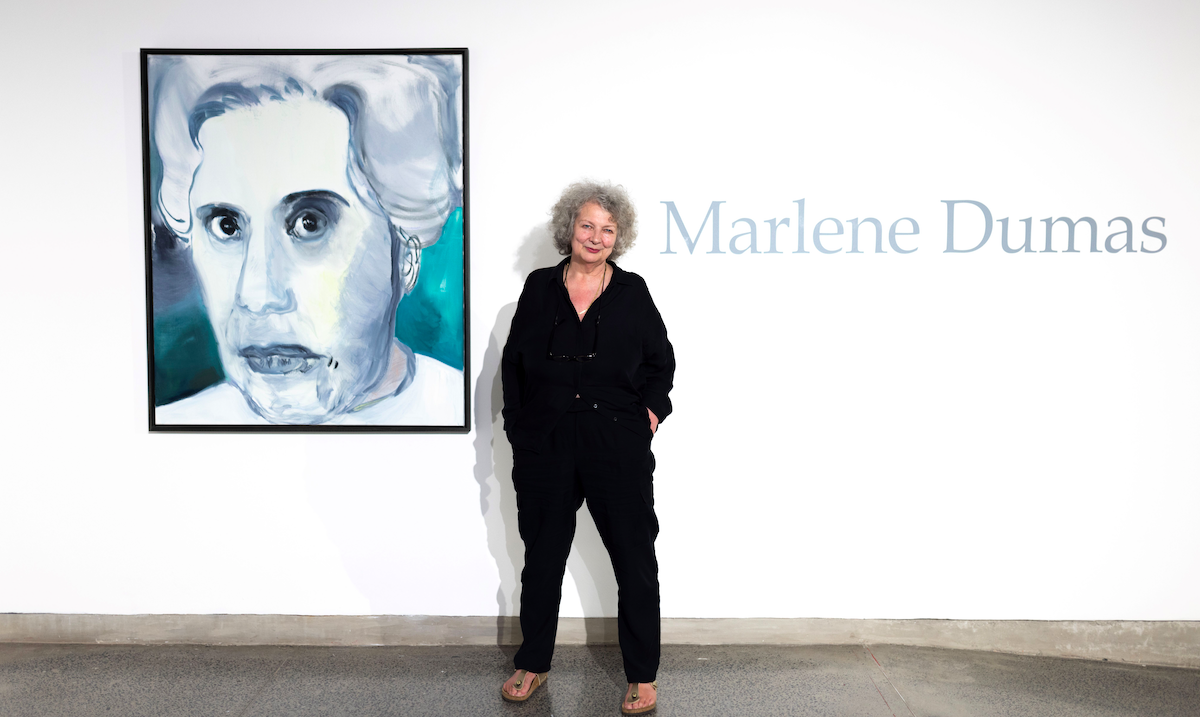At a Glance
- Marlene Dumas sets an auction record with a $13.7 million sale at Christie’s New York.
- “Miss January” becomes the most expensive artwork by a living female artist globally.
- Surging demand boosts African contemporary art’s visibility in the global art market.
South African-born painter Marlene Dumas has shattered records after her 1997 work “Miss January” sold for $13.7 million (R245 million) at Christie’s auction in New York, making her the world’s most expensive living female artist.
The sale marks a defining moment for both Dumas and African contemporary art, spotlighting the global demand for thought-provoking works from the continent.
Painted in 1997, “Miss January” is widely considered Dumas’ magnum opus. Standing nearly three meters tall, the portrait reinterprets a theme the artist explored as a child: the depiction of idealized femininity.
The image—drawn from an erotic magazine—conveys detachment and vulnerability, offering a piercing critique of the objectification of women in media and art history.
Auction triumph: A new benchmark for living female artists
The auction, conducted by Christie’s, had estimated the painting’s value between $12 million (R215 million) and $18 million (R322 million).
According to the auction house, the artwork drew international bidding interest due to its provenance, artistic weight, and historical exhibition track record.
The piece was previously part of the prestigious Rubell family collection in the U.S., a collection noted for championing African-American and Global South artists.
Marlene Dumas’ work has been exhibited in major institutions including the Museum of Modern Art in New York, Tate Modern in London, and the Stedelijk Museum in Amsterdam.
“This is a watershed moment,” said Marelize van Zyl, CEO of Aspire Art. “Dumas doesn’t just paint images—she dissects the psyche.
This painting is not only visually commanding, it also challenges entrenched narratives about gender, race, and identity.”
The rise of Marlene Dumas: From Cape Town to global influence
Born in 1953 in Cape Town and raised on a vineyard in Kuils River, Dumas studied at the Michaelis School of Fine Art before relocating to the Netherlands in 1976.
She later studied psychology at the University of Amsterdam—an influence that permeates her emotionally intense and layered canvases.
Known for her raw, fluid brushwork and exploration of controversial themes—ranging from sexuality and race to personal trauma—Dumas’ art frequently destabilizes the viewer’s expectations.
She has received major international awards, including the Rolf Schock Prize in Visual Arts and the prestigious Johannes Vermeer Award.
“Her power lies in making the invisible visible,” Van Zyl said. “She confronts audiences with their assumptions, especially regarding the female form.”
A spotlight on African contemporary art
Beyond setting a financial record, the sale signals broader recognition for African and women artists on the global stage. According to Van Zyl, Dumas’ success sends a powerful message to emerging artists across Africa.
“This isn’t just a win for Dumas—it’s a win for the continent,” she said. “Collectors are waking up to the richness of African storytelling, techniques, and perspectives.”
In recent years, global interest in African contemporary art has surged. Major auction houses, galleries, and museums have increasingly turned their attention to creators from Nigeria, South Africa, Ghana, and Kenya, among others.
Yet, disparities remain. Works by female artists still fetch less than those of their male counterparts. Van Zyl believes Dumas’ triumph could shift that balance.
“This sale is more than symbolic,” she said. “It’s a correction in art history—and a call to re-evaluate what and who we value.”
Investment in African art gains momentum
The art market is taking note. With growing institutional interest and digital platforms allowing wider access, African artists are increasingly commanding attention from global collectors and investors.
Dumas’ record-setting sale is expected to trigger a ripple effect across auctions, galleries, and private sales.
As the global art world becomes more inclusive, Dumas’ achievement serves as a powerful reminder: Africa is not just participating—it’s leading.





